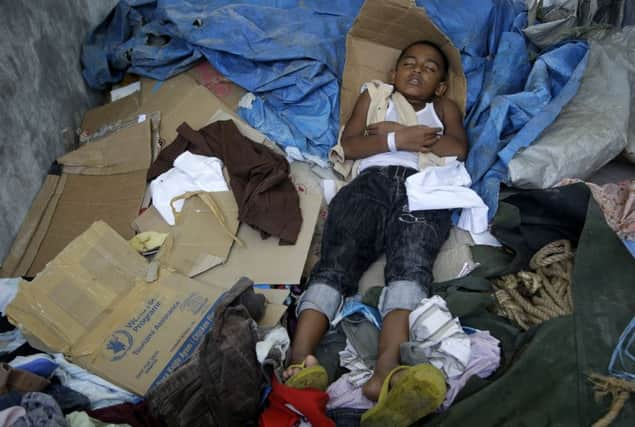Malaysia: Trafficking victims’ graves found


The finding follows a similar discovery earlier this month by police in Thailand who unearthed at least 33 bodies from shallow graves on the Thai side of the border.
The grim discoveries are shedding new light on the hidden network of jungle camps run by traffickers, who have for years held countless desperate people captive while extorting ransoms from their families.
Advertisement
Hide AdAdvertisement
Hide AdMost of those who have fallen victim to the trafficking networks are refugees and impoverished migrants from Myanmar and Bangladesh, part of a wave of people who have fled their homelands to reach countries like Malaysia, where they hope to find work or live free from persecution.
As south-east Asian governments have launched crackdowns amid intensified international pressure and media scrutiny, traffickers have abandoned camps on land and even boats at sea to avoid arrest.
Malaysian Home Minister Zahid Hamidi said that police were trying to identify and verify “mass graves that were found” in the region near the Thai border.
“These graves are believed to be a part of human trafficking activities involving migrants,” he said, adding that police have discovered 17 abandoned camps that they suspect were used by traffickers.
There was no immediate word on how many bodies had been recovered. Mr Zahid said that each grave probably contained anywhere from one to four bodies, and that authorities were in the process of counting.
He said he was shocked at the discoveries, because “just last week, we went there to see for ourselves.”
He said he expected more camps and graves to be found “because they have been there for quite some time actually. We are still investigating, but I suspect they have been operating for at least five years.”
Human rights groups and activists say the area on the Thai-Malaysia border has been used for years to smuggle migrants and refugees, including Rohingya Muslims, a persecuted minority in Myanmar.
Advertisement
Hide AdAdvertisement
Hide AdIn many cases, they pay human smugglers thousands of dollars for passage, but are instead held for weeks or months, while traffickers extort more money from families back home. Rights groups say some have been beaten to death, and reports have documented other cases in which people have been enslaved on fishing boats.
Since 10 May alone, more than 3,600 people – about half of them from Bangladesh and half Rohingya from Myanmar – have landed ashore in Indonesia, Malaysia and Thailand. Thousands more are believed to be trapped at sea in boats abandoned by their captains.
The graves discovered in Thailand earlier this month were mostly in southern Songkla province.
Last June, the US downgraded Thailand and Malaysia to Tier 3, its lowest category, in an annual assessment of how governments handle human trafficking.
On Saturday in Vietnam’s capital, Hanoi, UN Secretary-General Ban Ki-moon said he had been speaking to regional leaders about the crisis. Malaysia and Indonesia announced last week that they would provide temporary shelter for up to one year for migrants recently found or still stranded at sea.